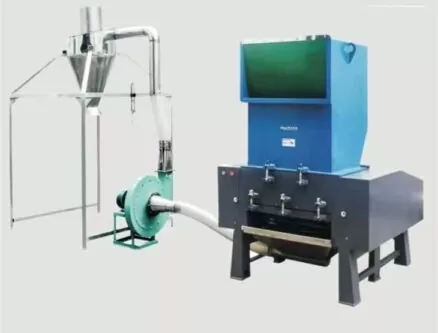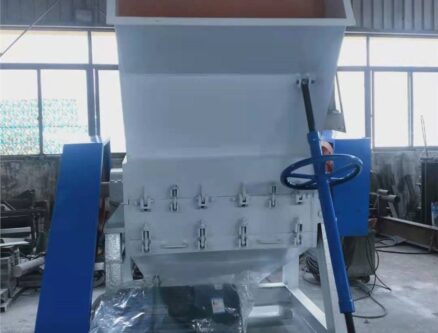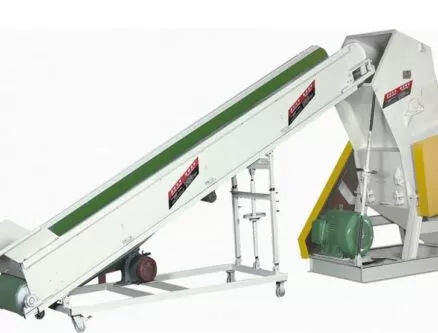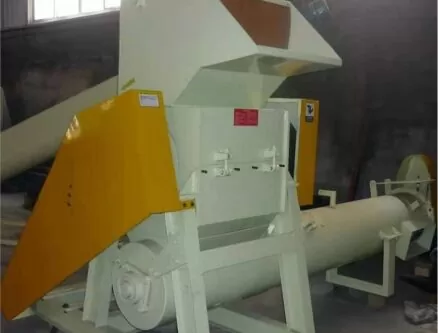China alone produces millions of tons of agricultural plastic waste every year—think mulch films, greenhouse coverings, irrigation pipes, pesticide containers. Most of them end up buried, burned, or simply abandoned in fields. That’s not just wasteful, it’s dangerous. These plastics pollute the soil, damage ecosystems, and reduce crop yields. But what if I told you that we can crush this problem—literally and technologically?
Agricultural plastic crushing technology is revolutionizing the way we deal with farm waste. By using advanced shredders, crushers, and washing lines, we can efficiently process discarded plastics into reusable raw materials—reducing pollution, recovering value, and promoting sustainability in agriculture. It’s a win for farmers and a win for the planet.
Hang tight, because this is where heavy-duty engineering meets green innovation—and where I, as CEO of Amige, live and breathe (preferably not toxic fumes).

What makes agricultural plastic waste so tricky?
Agricultural plastic is a special beast.
Unlike household or industrial plastic, farm plastics are usually:
- Contaminated with soil, pesticides, and moisture
- Thin, brittle, or sun-degraded
- Mixed with non-plastic debris like twine or crop residues
These conditions make traditional recycling methods ineffective. A standard crusher might jam. Washing lines clog. Sorting becomes a nightmare.
That’s why crushing technology for agri-plastic requires tailored innovation. We’re not just smashing stuff—we’re engineering a process to handle dirt, disorder, and diversity.
What innovations are transforming the crushing process?
Let me geek out for a second (don’t worry, I’ll keep it snappy).
At Amige, we’ve developed several innovations specifically for agricultural plastics:
- Pre-washing crushers that rinse and crush in one step.
- Double-stage shredders with variable speed control to handle brittle and flexible film.
- Anti-wrap cutter designs to prevent long plastic films from clogging.
- Dust and mud filtering systems built right into the crushing chamber.
These features may sound nerdy, but they solve real problems farmers face when trying to recycle their plastic. Dirty film? Cracked pipes? Bring it on.

Why does crushing matter in the agricultural plastic recycling process?
Crushing is more than just the fun part (though I won’t lie—it is pretty satisfying).
It’s a critical pre-treatment step that reduces the volume of plastic waste and prepares it for downstream processes like washing, drying, and pelletizing.
The more precise and efficient the crushing, the better the end product. Poorly crushed material can cause jamming, energy waste, and low output quality in later stages. It’s the classic case of “garbage in, garbage out.”
That’s why we spend so much time obsessing over rotor blade angles and shaft torque. Because precision = profit = planet-saving.
What types of agricultural plastic can be crushed and recycled?
You’d be surprised how much farm plastic can be reused—if you process it right.
Here’s what we commonly handle:
- Mulch films (LDPE) – often dirty and thin, but very recyclable after cleaning.
- Drip irrigation pipes (HDPE/LDPE) – stiff and long, ideal for shredders.
- Greenhouse film (PE) – large sheets that need anti-wrap tech.
- Agrochemical bottles (PP/HDPE) – rigid, often contaminated.
- Seedling trays and crates (PS/PP) – bulky but uniform.
Each of these requires different blade configurations and crushing speeds to handle their unique physical properties.
And yes, we’ve crushed them all—literally.

How do we handle contamination in agricultural plastics?
This is where it gets messy—literally.
Most farm plastics are covered in dirt, pesticide residue, and even manure. If we don’t remove those before recycling, we end up producing low-quality pellets or jamming machines.
Our solution? A three-pronged approach:
- Dry pre-shredding – break down large items without water waste.
- High-pressure washing lines – blast away the gunk with rotating spray arms.
- Centrifugal dewatering – dry the material efficiently before pelletizing.
We even offer enzyme-based cleaning modules for clients looking to go extra green.
Think of it like giving a dirty plastic film a proper spa treatment before its second life.
How are farmers and cooperatives benefiting from crushing technology?
Here’s the kicker—this tech isn’t just for recycling giants.
More and more farmers’ cooperatives and rural entrepreneurs are setting up mini-recycling plants. With a few key machines—a shredder, a washer, a pelletizer—they can turn waste into income.
In many cases, recycled pellets are sold to:
- Irrigation pipe manufacturers
- Plastic pallet factories
- Agricultural product packaging companies
Some even use recycled material on their own farms, creating a closed-loop system. That’s what I call farming with benefits.
And let’s not forget the government subsidies and carbon credits that come with it in many regions. Green tech = green cash.
What’s the future of crushing technology in agriculture?
We’re just getting started.
Here’s what I see coming:
- AI-powered sorting modules that auto-classify plastics by type and color.
- Solar-powered crushing lines for remote or off-grid farms.
- Mobile crushing units that can travel from field to field during harvest season.
- Blockchain traceability to track recycled material through the supply chain.
At Amige, we’re already prototyping several of these. Because if we want a cleaner agricultural future, we need smart, adaptable machines that can evolve as fast as the challenges.

Conclusion
Plastic crushing tech is reshaping how we handle agricultural waste. With innovation, grit, and a little engineering flair, we’re turning pollution into possibility—one crushed film at a time.
